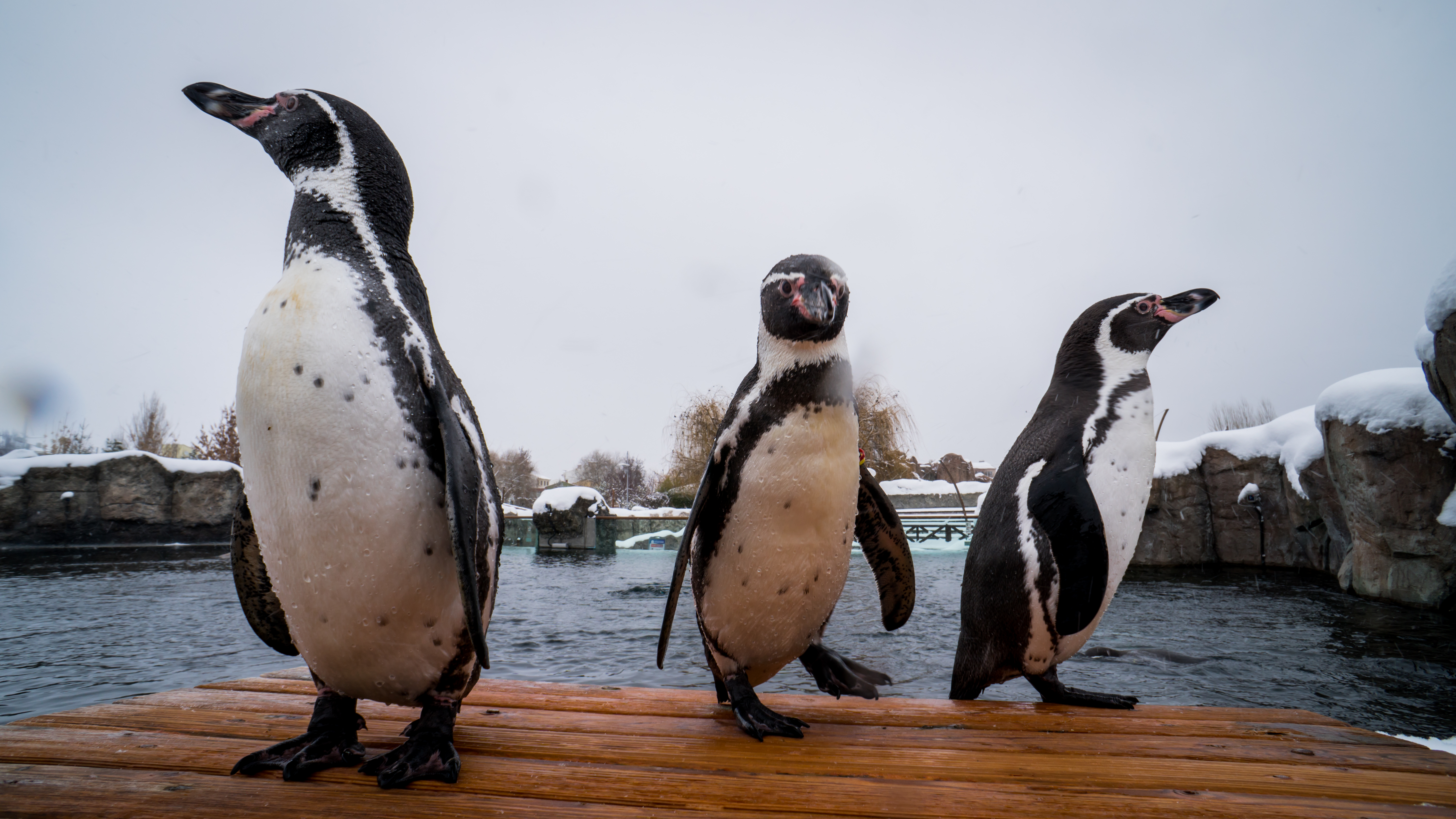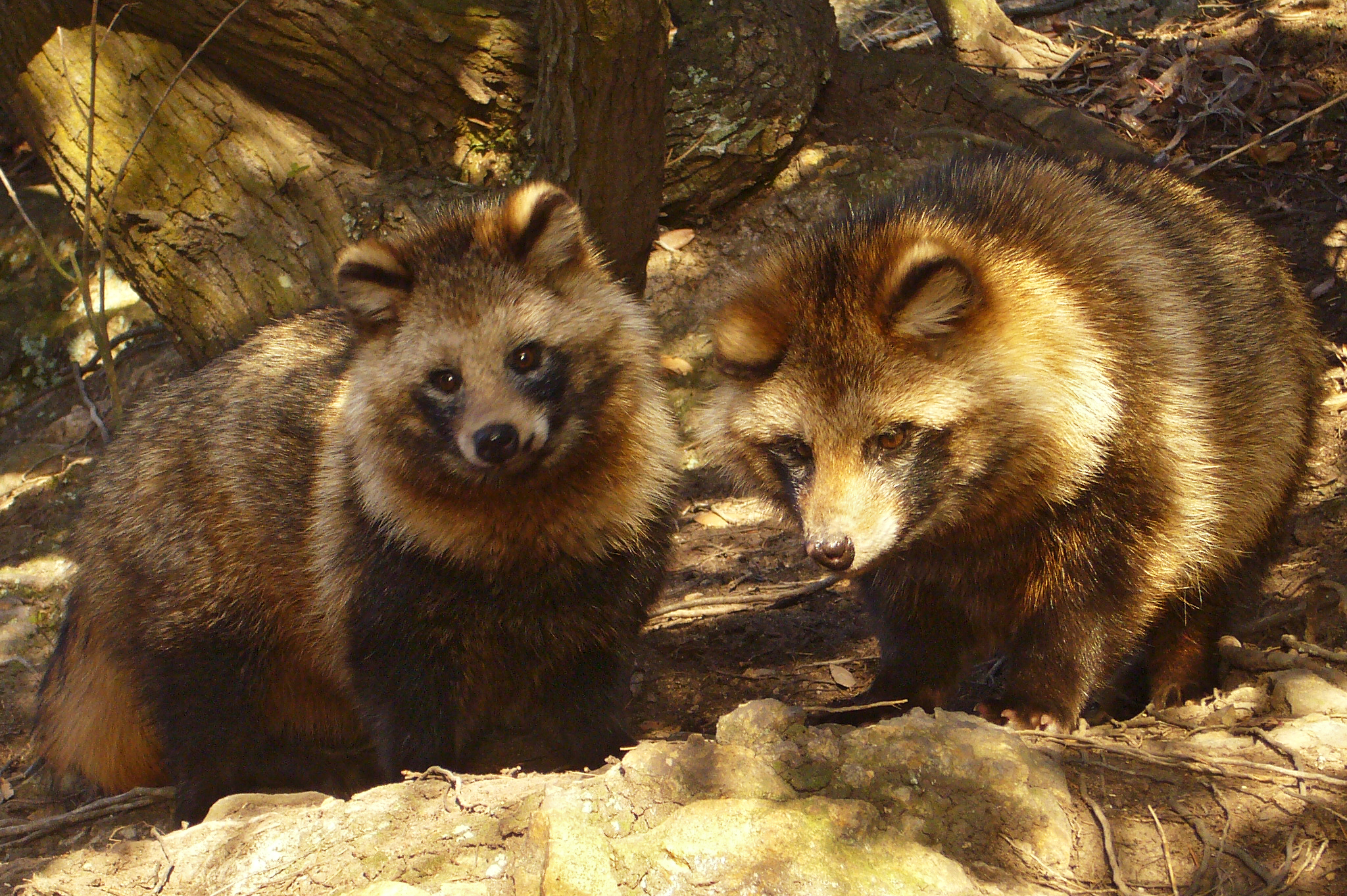|
Akita Omoriyama Zoo
The , also known as “Milve”, is a municipal zoo opened in July 1967 in the city of Akita, Akita Prefecture, Japan. Opened in 1972, the zoo covers 15 hectares, with 114 species on display. It is accredited by the Japanese Association of Zoos and Aquariums (JAZA). The zoo is modeled after Asahiyama Zoo in Hokkaido with holding areas designed to mimic the animal’s natural habitat, and incorporating “action exhibits” where animal activity is encouraged, particularly during feeding time. History The zoo began as a zoo attached to the Akita Prefectural Children’s Hall within the grounds of former Kubota Castle () in October 1950. It was transferred to the control of Akita City in April 1953 and renamed the Akita City Children’s Zoo, and "Monkey Train ride" was very popular. In September 1972, it was relocated to its present location. The zoo successfully bred the ''tanuki'' in captivity in 1974, followed by the barn owl in 1978, and Japanese marten in 1994. It also su ... [...More Info...] [...Related Items...] OR: [Wikipedia] [Google] [Baidu] |
Akita, Akita
'Autumn field' is the capital Cities of Japan, city of Akita Prefecture, Japan, and has been designated a Core cities of Japan, core city since 1 April 1997. , the city has an estimated population of 305,625, 136,628 households and a population density of 340 persons per km2. The total area of the city is . History The area of present-day Akita was part of ancient Dewa Province, and has been inhabited for thousands of years. The Jizōden Site, Jizōden ruins within the city limits are a major archaeological site with artifacts from the Japanese Paleolithic period through the Jōmon period, Jōmon and Yayoi periods. During the Nara period, the Yamato dynasty, Yamato court established Akita Castle in 733 AD to bring the local Emishi tribes under its control. The area was ruled by a succession of local samurai clans in the Sengoku period, before coming under the control of the Satake clan of Kubota Domain during the Edo period. Under the Tokugawa shogunate, a castle town developed ar ... [...More Info...] [...Related Items...] OR: [Wikipedia] [Google] [Baidu] |
Prairie Dog
Prairie dogs (genus ''Cynomys'') are herbivorous burrowing ground squirrels native to the grasslands of North America. Within the genus are five species: black-tailed, white-tailed, Gunnison's, Utah, and Mexican prairie dogs. In Mexico, prairie dogs are found primarily in the northern states, which lie at the southern end of the Great Plains: northeastern Sonora, north and northeastern Chihuahua, northern Coahuila, northern Nuevo León, and northern Tamaulipas. In the United States, they range primarily to the west of the Mississippi River, though they have also been introduced in a few eastern locales. They are also found in the Canadian Prairies. Despite the name, they are not actually canines; prairie dogs, along with the marmots, chipmunks, and several other basal genera belong to the ground squirrels (tribe ''Marmotini''), part of the larger squirrel family (''Sciuridae''). Prairie dogs are considered a keystone species with their mounds often being used by other s ... [...More Info...] [...Related Items...] OR: [Wikipedia] [Google] [Baidu] |
Humboldt Penguin
The Humboldt penguin (''Spheniscus humboldti'') is a medium-sized penguin. It resides in South America, its range mainly contains most of coastal Peru. Its nearest relatives are the African penguin, the Magellanic penguin and the Galápagos penguin. The Humboldt penguin and the cold water current it swims in both are named after the explorer Alexander von Humboldt. The species is listed as vulnerable by the IUCN with no population recovery plan in place. The current population is composed of 32,000 mature individuals and is going down. It is a migrant species. Humboldt penguins nest on islands and rocky coasts, burrowing holes in guano and sometimes using scrapes or caves. In South America the Humboldt penguin is found only along the Pacific coast, and the range of the Humboldt penguin overlaps that of the Magellanic penguin on the central Chilean coast. It is vagrant in Ecuador and Colombia. The Humboldt penguin has been known to live in mixed species colonies with the Magell ... [...More Info...] [...Related Items...] OR: [Wikipedia] [Google] [Baidu] |
Golden Eagle
The golden eagle (''Aquila chrysaetos'') is a bird of prey living in the Northern Hemisphere. It is the most widely distributed species of eagle. Like all eagles, it belongs to the family Accipitridae. They are one of the best-known bird of prey, birds of prey in the Northern Hemisphere. These birds are dark brown, with lighter golden-brown plumage on their napes. Immature eagles of this species typically have white on the tail and often have white markings on the wings. Golden eagles use their agility and speed combined with powerful feet and large, sharp talons to hunt a variety of prey, mainly hares, rabbits, and marmots and other ground squirrels. Golden eagles maintain home ranges or territories that may be as large as . They build large bird nest, nests in cliffs and other high places to which they may return for several breeding years. Most breeding activities take place in the spring; they are monogamous and may remain together for several years or possibly for life. Fe ... [...More Info...] [...Related Items...] OR: [Wikipedia] [Google] [Baidu] |
Chimpanzee
The chimpanzee (''Pan troglodytes''), also known as simply the chimp, is a species of great ape native to the forest and savannah of tropical Africa. It has four confirmed subspecies and a fifth proposed subspecies. When its close relative the bonobo was more commonly known as the pygmy chimpanzee, this species was often called the common chimpanzee or the robust chimpanzee. The chimpanzee and the bonobo are the only species in the genus ''Pan''. Evidence from fossils and DNA sequencing shows that ''Pan'' is a sister taxon to the human lineage and is humans' closest living relative. The chimpanzee is covered in coarse black hair, but has a bare face, fingers, toes, palms of the hands, and soles of the feet. It is larger and more robust than the bonobo, weighing for males and for females and standing . The chimpanzee lives in groups that range in size from 15 to 150 members, although individuals travel and forage in much smaller groups during the day. The species lives in ... [...More Info...] [...Related Items...] OR: [Wikipedia] [Google] [Baidu] |
Cougar
The cougar (''Puma concolor'') is a large Felidae, cat native to the Americas. Its Species distribution, range spans from the Canadian Yukon to the southern Andes in South America and is the most widespread of any large wild terrestrial mammal in the Western Hemisphere. It is an adaptable, Generalist and specialist species, generalist species, occurring in most American habitat types. This wide range has brought it many common names, including puma, mountain lion, catamount and panther (for the Florida sub-population). It is the second-largest cat in the New World, after the jaguar (''Panthera onca''). Secretive and largely solitary by nature, the cougar is properly considered both nocturnal and crepuscular, although daytime sightings do occur. Despite its size, the cougar is more closely related to smaller felines, including the domestic cat (''Felis catus'') than to any species of the subfamily Pantherinae. The cougar is an ambush predator that pursues a wide variety of pre ... [...More Info...] [...Related Items...] OR: [Wikipedia] [Google] [Baidu] |
Siberian Tiger
The Siberian tiger or Amur tiger is a population of the tiger subspecies ''Panthera tigris tigris'' native to the Russian Far East, Northeast China and possibly North Korea. It once ranged throughout the Korean Peninsula, but currently inhabits mainly the Sikhote-Alin mountain region in southwest Primorye Province in the Russian Far East. In 2005, there were 331–393 adult and subadult Siberian tigers in this region, with a breeding adult population of about 250 individuals. The population had been stable for more than a decade because of intensive conservation efforts, but partial surveys conducted after 2005 indicate that the Russian tiger population was declining. An initial census held in 2015 indicated that the Siberian tiger population had increased to 480–540 individuals in the Russian Far East, including 100 cubs. This was followed up by a more detailed census which revealed there was a total population of 562 wild Siberian tigers in Russia. As of 2014, about 35 in ... [...More Info...] [...Related Items...] OR: [Wikipedia] [Google] [Baidu] |
Raccoon
The raccoon ( or , ''Procyon lotor''), sometimes called the common raccoon to distinguish it from other species, is a mammal native to North America. It is the largest of the procyonid family, having a body length of , and a body weight of . Its grayish coat mostly consists of dense underfur, which insulates it against cold weather. Three of the raccoon's most distinctive features are its extremely dexterous front paws, its facial mask, and its ringed tail, which are themes in the mythologies of the indigenous peoples of the Americas relating to the animal. The raccoon is noted for its intelligence, as studies show that it is able to remember the solution to tasks for at least three years. It is usually nocturnal and omnivorous, eating about 40% invertebrates, 33% plants, and 27% vertebrates. The original habitats of the raccoon are deciduous and mixed forests, but due to their adaptability, they have extended their range to mountainous areas, coastal marshes, and urban ... [...More Info...] [...Related Items...] OR: [Wikipedia] [Google] [Baidu] |
Japanese Raccoon Dog
The Japanese raccoon dog (''Nyctereutes viverrinus''), also known as the ''tanuki'' ( ja, , , ), is a species of canid endemic to Japan. It is one of two species in the genus ''Nyctereutes'', alongside the common raccoon dog (''N. procyonoides''), of which it was formerly thought to be a subspecies. The Japanese raccoon dog has a relatively smaller stomach and shorter fur of lesser insulation value than mainland raccoon dogs. A rare, white colour type can also be found. Within Japanese folklore, the ''tanuki'' have had a significant role since ancient times. The legendary ''tanuki'' are reputed to be mischievous and jolly, masters of disguise and shapeshifting but somewhat gullible and absentminded. The animals have also been common in Japanese art, particularly as subjects for statues. Japanese etymology While ''tanuki'' are prominent in Japanese folklore and proverbs, they were not always clearly distinguished from other animals with a similar appearance. In local dialects, '' ... [...More Info...] [...Related Items...] OR: [Wikipedia] [Google] [Baidu] |
Japanese Macaque
The Japanese macaque (''Macaca fuscata''), also known as the snow monkey, is a terrestrial Old World monkey species that is native to Japan. Colloquially, they are referred to as "snow monkeys" because some live in areas where snow covers the ground for months each year – no other non-human primate lives further north, nor in a colder climate. Individuals have brownish grey fur, pinkish-red faces, and short tails. Two subspecies are known. In Japan, the species is known as ''Nihonzaru'' (ニホンザル, a combination of ''Nihon'' 日本 "Japan" + ''saru'' 猿 "monkey") to distinguish it from other primates, but the Japanese macaque is very familiar in Japan — as it is the only species of monkey in Japan — so when Japanese people simply say ''saru'', they usually have the Japanese macaque in mind. Physical characteristics The Japanese macaque is sexually dimorphic. Males weigh on average , while females average .Fooden J, Aimi M. (2005) "Systematic review of Japanese ma ... [...More Info...] [...Related Items...] OR: [Wikipedia] [Google] [Baidu] |
African Bush Elephant
The African bush elephant (''Loxodonta africana'') is one of two extant African elephant species and one of three extant elephant species. It is the largest living terrestrial animal, with bulls reaching a shoulder height of up to and a body mass of up to . It is distributed across 37 African countries and inhabits forests, grasslands and woodlands, wetlands and agricultural land. Since 2021, it has been listed as Endangered on the IUCN Red List. It is threatened foremost by habitat destruction, and in parts of its range also by poaching for meat and ivory. It is a social mammal, travelling in herds composed of cows and their offspring. Adult bulls usually live alone or in small bachelor groups. It is a herbivore, feeding on grasses, creepers, herbs, leaves, and bark. The menstrual cycle lasts three to four months, and females are pregnant for 22 months, the longest gestation period of any mammal. Taxonomy ''Elephas africanus'' was the scientific name proposed by Johann Fri ... [...More Info...] [...Related Items...] OR: [Wikipedia] [Google] [Baidu] |







.jpg)
_2.jpg)


_03.jpg)